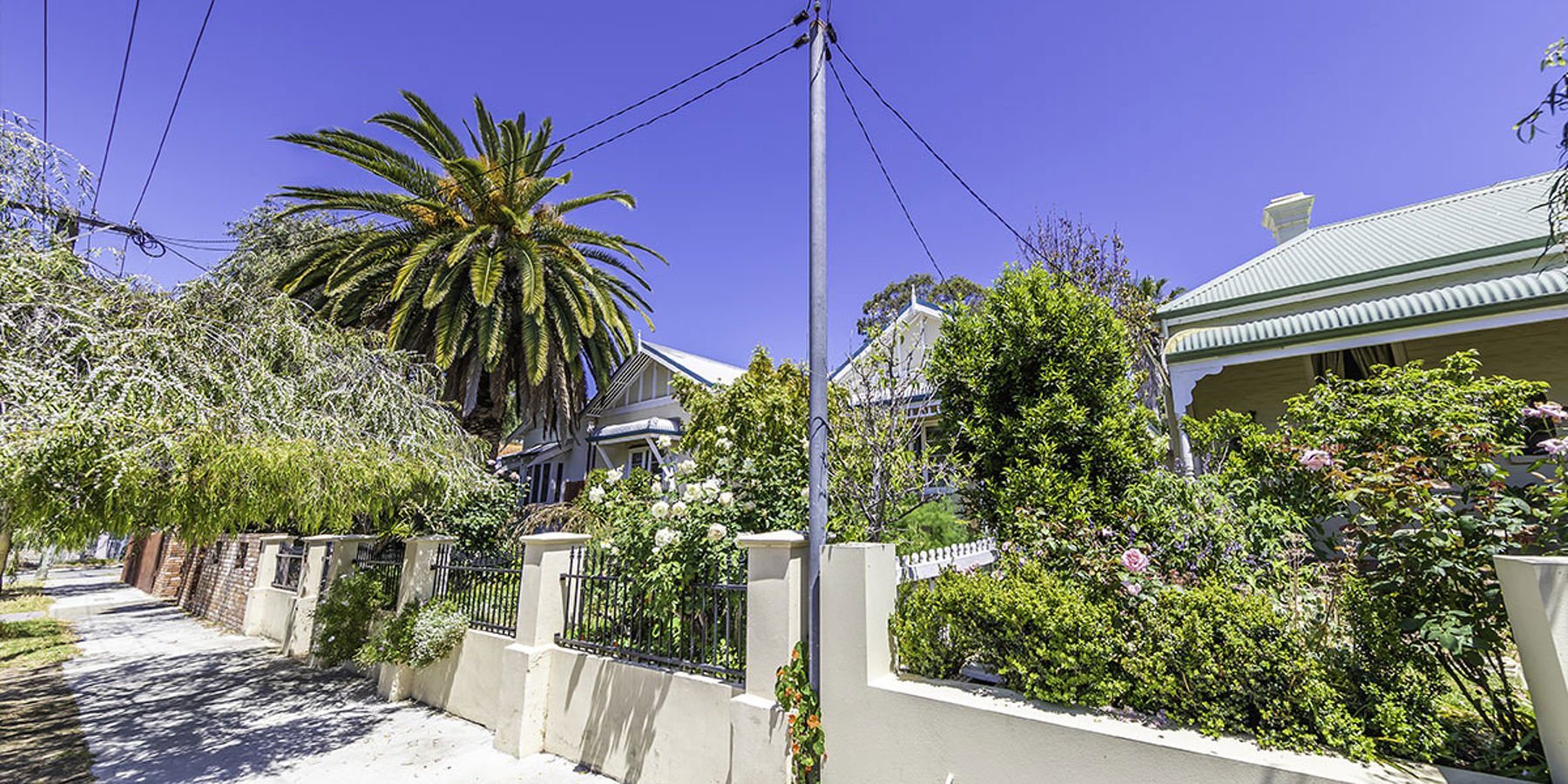Power comes in and you use it, but did you ever think about how the grid connects to your house?
We generally experience power the same way. But depending on whether you have overhead or underground power, the infrastructure set up to deliver power to your home is slightly different.
However in both cases, a network service wire will lead to a connection point on your property, from where energy will be safely delivered to your home. The main difference is that connection point.
Some of it is owned by you. Many people don’t realise that most of the energy infrastructure on a property, like service wire conductor support poles, the box containing Western Power’s meter (pictured below), inverter and solar panels (if installed), remain the property and responsibility of the customer.
However you don’t own the green domes (the green pillar often located on a property’s front verge or driveway) network meters or the meter fuse. These items belong to Western Power or another network provider if outside the South West Interconnected System (SWIS).
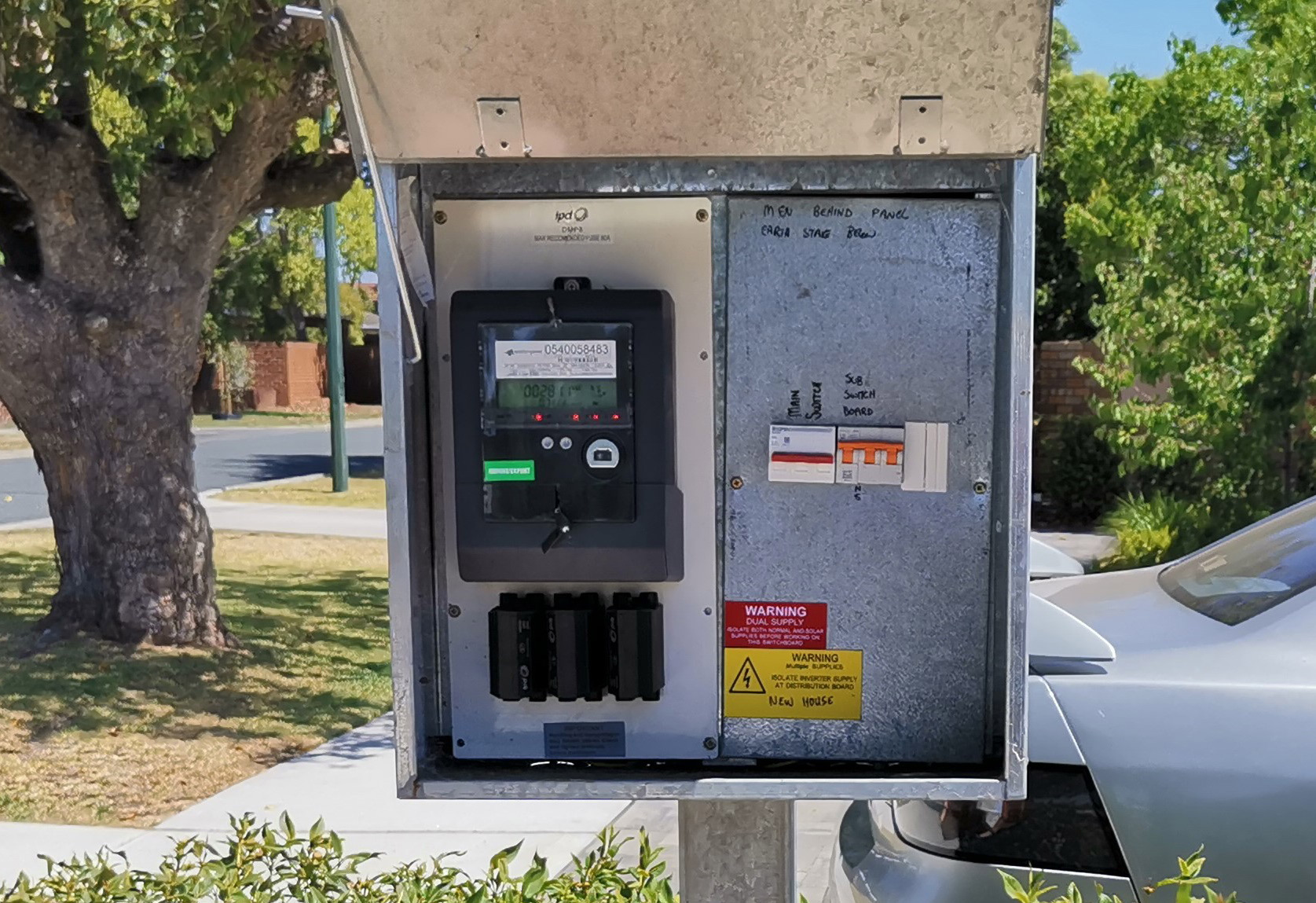
If your house has an overhead power connection
If you’re in an older area, or in smaller regional towns, the power may be supplied to your house by overhead lines.
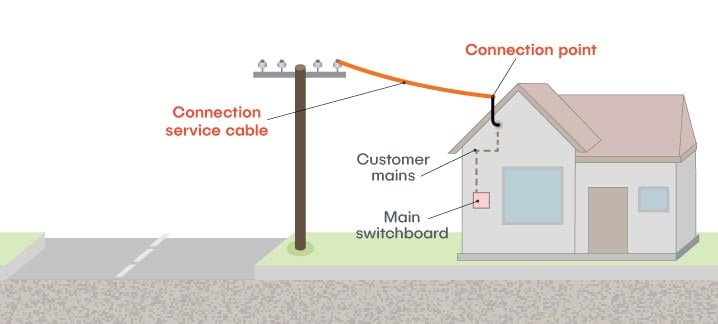
Where your house is positioned on your block also has an impact on how you’re connected to the grid. The network service wire that links the grid to your home is quite heavy. To remain structurally sound, it can only stretch around 30 metres from pole to pole before it needs additional support to maintain the correct height above the ground and to ensure it is not blown about in high winds.
Therefore, if your house is set back on the block and the powerline needs to stretch further than 30 metres, you will either need to install a private pole on your property to support the overhead service line or have an underground connection to the network.
These support poles belong to the property owner and must be installed within the private property boundaries.
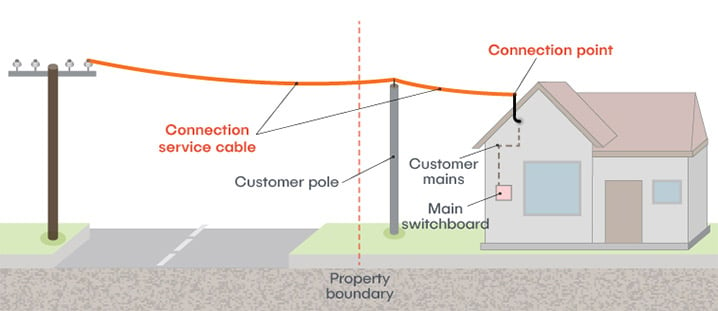
The connection point between the network service line and your property for overhead power is the mains connection box (MCB), located on either the riser bracket, or mounted on your building fascia. From the mains connection box, power then goes to your switchboard, from where the supplied electricity is dispersed to your home.
If you have solar panels, you will also have an inverter which will connect directly to your switchboard. This will enable the solar energy you generate to flow back out the same path – switchboard, mains connection box, network line – to reach the grid.
If your house has an underground power connection
In WA, undergrounding of power became compulsory for all new urban subdivisions in 1991.
New developments are typically built with underground power, however some older suburbs may have had their power connections converted from overhead to underground.
If you have underground power, you will have a green dome either on your property or somewhere nearby.
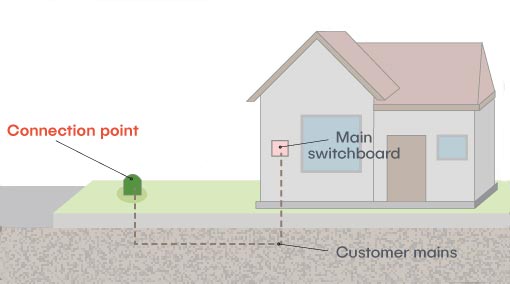
For underground, the connection point between the network service line and your property is the green dome. There is typically one green dome for every two adjoining properties.
Unlike the mains connection box which is owned by the customer, green domes are often shared between connections, and are owned by Western Power. So the green dome remains part of the network, but a mains connection box is part of the customers’ electrical installations.
Power flows from the network to the green dome. From that connection point, it goes to the switchboard on each individual property. Once electrical power reaches the switchboard , regardless of whether you have an overhead or underground connection, you are able to use electricity within your home.
Strata or apartments
How the grid connects to a strata or apartment is very similar to the connection for a house and can be connected by either overhead or underground powerlines.
The main difference is that after the power reaches the consumer mains, it typically goes via a switchboard on to the individual homes (which may each have their own meter box).
So, no matter whether you have overhead or below ground power, the systems are in place to safely deliver power to your property.
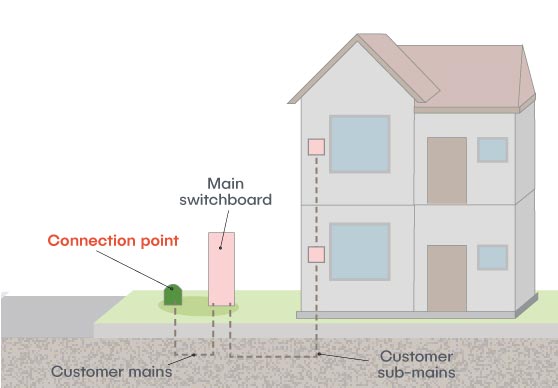
Western Power is not the only one involved in getting power to your home. Find out more about who's who in the electricity landscape and the responsibilities you have as an electricity consumer too.
